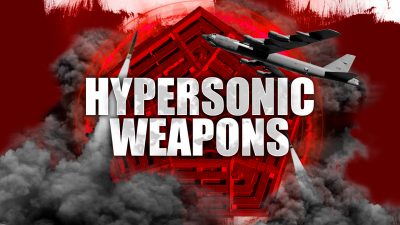Kremlin: Russian Hypersonic Missiles Reaction to U.S. Missile Shield Near Its Borders

All Global Research articles can be read in 51 languages by activating the “Translate Website” drop down menu on the top banner of our home page (Desktop version).
Visit and follow us on Instagram at @crg_globalresearch.
***
Russian presidential spokesman Dmitry Peskov was cited by TASS on July 20 confirming that his nation’s development of hypersonic missiles (five or more times the speed of sound) is a direct response to the American (and NATO it should be added) interceptor missile system being deployed against his nation near its western borders.
“If you remember, the president [President of Russia Vladimir Putin] has repeatedly said that, unfortunately, we have observed a gradual dismantling of the entire document[ed/able] system of strategic security in the past decades and even over a longer period.”
On June 9 TASS cited President Vladimir Putin stating American anti-ballistic missile interceptors based in Romania and Poland could strike Moscow in 15 minutes if a warhead was added to them; which, notwithstanding Western disclaimers not to do so, could be easily done. Russia has not been invited to inspect the missiles in Romania, for example. Paraphrasing the head of state, the TASS report disclosed the above threat is eminently practicable “because the missile defense launch systems stationed there can be used to carry out strikes as well.”
In 2012 the Pentagon installed an Army Navy/Transportable Radar Surveillance (AN/TPY-2), a Forward-Based X-Band Transportable surveillance radar in Kürecik, Turkey, which was transferred to NATO command as part of the European Phased Adaptive Approach which also includes the Standard Missile-3 IIA interceptors in Romania.
What the Russian government never mentions, however, is that the Barack Obama administration’s European Phased Adaptive Approach consists of more than what it is also referred to as: Aegis Ashore. The Aegis Combat System includes stationing Standard Missile-3s (SM-3s) on warships. The U.S. Navy has 62 Arleigh Burke-class destroyers and 22 Ticonderoga-class cruisers equipped to carry and launch SM-3s, with more under development.
Under NATO auspices the U.S. bases four of the destroyers at the Naval Station Rota in Spain, with that number to be raised to six, for deployment in the Mediterranean Sea and the Black Sea. Four of the American Aegis destroyers and a cruiser have been sent to the Black Sea so far this year.
In recapitulating the comments of the man he speaks for, Peskov stated:
“What’s more, we have been confronted with certain steps by the United States and NATO that have actually impaired the existing parity: this relates to creating ballistic missile defense positioning areas, deploying interceptor missile systems in Romania and other countries in the close vicinity to our borders. These are the systems that can also launch strike missiles. That is, all these steps have been taken to dismantle the existing parity. This has required measures to ensure Russia’s security and guarantee the continuation of the existing parity. This is what has been done.”
Anyone reminded of the Cuban Missile Crisis of 1962 would be justified in making the connection.
In a transparent effort to deflect attention and reverse the responsibility for the current crisis, as potentially dangerous as can be imagined, Pentagon spokesman John Kirby has recently said, “Russia’s new hypersonic missiles could potentially lead to destabilization and pose a significant risk because they can carry a nuclear charge.” As though Russia had already based the missiles in Canada across Lake Erie from the U.S.
The Russian Foreign Ministry has regularly warned that the land-based Aegis Ashore ballistic missile system in Eastern Europe was a violation of existing agreements between the U.S. and Russia and that the American launchers used for it could launch more than has been claimed they would or will.
*
Note to readers: Please click the share buttons above or below. Follow us on Instagram, @crg_globalresearch. Forward this article to your email lists. Crosspost on your blog site, internet forums. etc.
Rick Rozoff, renowned author and geopolitical analyst, actively involved in opposing war, militarism and interventionism for over fifty years. He manages the Anti-Bellum and For peace, against war website
He is a Research Associate of the Centre for Research on Globalization.

